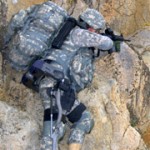Archive for 2009
Американским солдатам поможет Невероятный Халк
- Тип контента: Новостная статья, Видео
- Номер документа: 2150
- Название документа: Американским солдатам поможет Невероятный Халк
- Номер (DOI, IBSN, Патент): Не заполнено
- Изобретатель/автор: Не заполнено
- Правопреемник/учебное заведение: Не заполнено
- Дата публикации документа: 2009-03-12
- Страна опубликовавшая документ: Россия
- Язык документа: Русский
- Наименование изделия: Не заполнено
- Источник: http://www.membrana.ru/particle/13579
- Вложения: Не заполнено
- Аналитик: Ридна Украина)))
 Совпадение это или намёк, но имя нового робототехнического костюма, разрабатываемого для американских военных, перекликается с названием фильма «Невероятный Халк» (The Incredible Hulk). Как оказалось, созданием собственного экзоскелета озаботился такой военно-промышленный гигант, как концерн Lockheed Martin.
Совпадение это или намёк, но имя нового робототехнического костюма, разрабатываемого для американских военных, перекликается с названием фильма «Невероятный Халк» (The Incredible Hulk). Как оказалось, созданием собственного экзоскелета озаботился такой военно-промышленный гигант, как концерн Lockheed Martin.
Категория: HULC | Нет комментариев »
Novel 6 dof wearable exoskeleton arm with pneumatic force feedback
- Тип контента: Научная статья
- Номер документа: 3511
- Название документа: Novel 6 dof wearable exoskeleton arm with pneumatic force feedback
- Номер (DOI, IBSN, Патент): 10.3901/CJME.2009.05.***
- Изобретатель/автор: Zhang Yu, Zhang Jia-Fan, Fu H., Dong Yi-ming, Chen Ying, Canjun Yang
- Правопреемник/учебное заведение: State Key Lab. of Fluid Power Transm. & Control, Zhejiang Univ., Hangzhou, China
- Дата публикации документа: 2009-03-06
- Страна опубликовавшая документ: Китай
- Язык документа: Английский
- Наименование изделия: Не заполнено
- Источник: http://www.docstoc.com/docs/19891264/novel-6-dof-wearable-ex
- Вложения: Да
- Аналитик: Дмитрий Соловьев
 A particular emphasis is put on a novel wearable exoskeleton arm, ZJUESA, with 6 degrees of freedom, which is used for the robot teleoperation with the force-feedback in the unknown environment. In this external structure mechanism, the 3-revolution-prismatic-spherical (3RPS) parallel mechanism is devised from the concept of the human upper-limb anatomy and applied for the shoulder 3-DOF joint. Meanwhile, the orthogonal experiment design method is introduced for its optimal design. Aiming at enhancing the performance of teleoperation, the force feedback is employed by the pneumatic system on ZJUESA to produce the vivid feeling in addition to the soft control interface. Due to the compressibility and nonlinearity of the pneumatic force feedback system, a novel hybrid fuzzy controller for the precise force control is proposed and realized based on the Mega8 microcontroller units as the units of the distributed control system on ZJUESA. With the results of several experiments for master-slave control with force feedback, the feasibility of ZJUESA system and the effect of its hybrid fuzzy controller are verified.
A particular emphasis is put on a novel wearable exoskeleton arm, ZJUESA, with 6 degrees of freedom, which is used for the robot teleoperation with the force-feedback in the unknown environment. In this external structure mechanism, the 3-revolution-prismatic-spherical (3RPS) parallel mechanism is devised from the concept of the human upper-limb anatomy and applied for the shoulder 3-DOF joint. Meanwhile, the orthogonal experiment design method is introduced for its optimal design. Aiming at enhancing the performance of teleoperation, the force feedback is employed by the pneumatic system on ZJUESA to produce the vivid feeling in addition to the soft control interface. Due to the compressibility and nonlinearity of the pneumatic force feedback system, a novel hybrid fuzzy controller for the precise force control is proposed and realized based on the Mega8 microcontroller units as the units of the distributed control system on ZJUESA. With the results of several experiments for master-slave control with force feedback, the feasibility of ZJUESA system and the effect of its hybrid fuzzy controller are verified.
Категория: Научные статьи | Нет комментариев »
Action-aiding system for wearable type action-aiding device, wearable type action-aiding device, and action-aiding method for the wearable type action-aiding device
- Тип контента: Патент
- Номер документа: 5006
- Название документа: Action-aiding system for wearable type action-aiding device, wearable type action-aiding device, and action-aiding method for the wearable type action-aiding device
- Номер (DOI, IBSN, Патент): WO2009025256
- Изобретатель/автор: Sankai, Y.
- Правопреемник/учебное заведение: Univ. of Tsukuba, Japan
- Дата публикации документа: 2009-02-26
- Страна опубликовавшая документ: Япония
- Язык документа: Японский
- Наименование изделия: Не заполнено
- Источник: http://www.wipo.int/patentscope/search/en/WO2009025256
- Вложения: Да
- Аналитик: Дмитрий Соловьев
 (EN)Provided is an action-aiding system, in which the action state of the wearable type action-aiding device (10-1) of a doctor (1) is transmitted via a network to the wearable action-aiding device (10-2) of a patient (2). This action state is reflected on the wearable action-aiding device (10-2) of the patient (2) so that the rehabilitation of the patient (2) is performed. Moreover, the action state of the wearable action-aiding device (10-2) is transmitted from the wearable action-aiding device (10-2) of the patient (2) to the wearable type action-aiding device (10-1). The action state of the wearable action-aiding device (10-2) is reflected on the wearable type action-aiding device (10-1). Thus, the doctor (1) can feel the state of the patient (2) objectively.
(EN)Provided is an action-aiding system, in which the action state of the wearable type action-aiding device (10-1) of a doctor (1) is transmitted via a network to the wearable action-aiding device (10-2) of a patient (2). This action state is reflected on the wearable action-aiding device (10-2) of the patient (2) so that the rehabilitation of the patient (2) is performed. Moreover, the action state of the wearable action-aiding device (10-2) is transmitted from the wearable action-aiding device (10-2) of the patient (2) to the wearable type action-aiding device (10-1). The action state of the wearable action-aiding device (10-2) is reflected on the wearable type action-aiding device (10-1). Thus, the doctor (1) can feel the state of the patient (2) objectively.
(далее…)
Категория: Патенты | Нет комментариев »
Robust EMG sensing system based on data fusion for myoelectric control of a robotic arm
- Тип контента: Научная статья
- Номер документа: 6244
- Название документа: Robust EMG sensing system based on data fusion for myoelectric control of a robotic arm
- Номер (DOI, IBSN, Патент): 10.1186/1475-925X-8-5
- Изобретатель/автор: Natalia M López, Fernando di Sciascio, Carlos M Soria, Max E Valentinuzzi
- Правопреемник/учебное заведение: Не заполнено
- Дата публикации документа: 2009-02-25
- Страна опубликовавшая документ: Аргентина
- Язык документа: Английский
- Наименование изделия: Не заполнено
- Источник: BioMedical Engineering OnLine
- Вложения: Да
- Аналитик: Глаголева Елена
 Background: Myoelectric control of a robotic manipulator may be disturbed by failures due to disconnected electrodes, interface impedance changes caused by movements, problems in the recording channel and other various noise sources. To correct these prob-lems, this paper presents two fusing techniques, Variance Weighted Average (VWA) and Decentralized Kalman Filter (DKF), both based on the myoelectric signal variance as selecting criterion.
Background: Myoelectric control of a robotic manipulator may be disturbed by failures due to disconnected electrodes, interface impedance changes caused by movements, problems in the recording channel and other various noise sources. To correct these prob-lems, this paper presents two fusing techniques, Variance Weighted Average (VWA) and Decentralized Kalman Filter (DKF), both based on the myoelectric signal variance as selecting criterion.
Methods: Tested in five volunteers, a redundant arrangement was obtained with two pairs of electrodes for each recording channel. The myoelectric signals were electronically amplified, filtered and digitalized, while the processing, fusion algorithms and control were implemented in a personal computer under MATLAB® environment and in a Digital Signal Processor (DSP). The experiments used an industrial robotic manipulator BOSCH SR-800, type SCARA, with four degrees of freedom; however, only the first joint was used to move the end effector to a desired position, the latter obtained as proportional to the EMG amplitude.
Results: Several trials, including disconnecting and reconnecting one electrode and disturbing the signal with synthetic noise, were performed to test the fusion techniques. The results given by VWA and DKF were transformed into joint coordinates and used as com-mand signals to the robotic arm. Even though the resultant signal was not exact, the failure was ignored and the joint reference signal never exceeded the workspace limits. Conclusion: The fault robustness and safety characteristics of a myoelectric controlled
manipulator system were substantially improved. The proposed scheme prevents potential risks for the operator, the equipment and the environment. Both algorithms showed efficient behavior. This outline could be applied to myoelectric control of prosthesis, or assistive manipulators to better assure the system functionality when electrode faults or noisy environment are present.
Категория: Научные статьи | Нет комментариев »
Robotic neurorehabilitation: a computational motor learning perspective
- Тип контента: Научная статья
- Номер документа: 6316
- Название документа: Robotic neurorehabilitation: a computational motor learning perspective
- Номер (DOI, IBSN, Патент): 10.1186/1743-0003-6-5
- Изобретатель/автор: Vincent S Huang, John W Krakauer
- Правопреемник/учебное заведение: Columbia University College of Physicians and Surgeons, New York
- Дата публикации документа: 2009-02-25
- Страна опубликовавшая документ: США
- Язык документа: Английский
- Наименование изделия: Не заполнено
- Источник: Journal of NeuroEngineering and Rehabilitation
- Вложения: Да
- Аналитик: Глаголева Елена
 Conventional neurorehabilitation appears to have litt-le impact on impairment over and above that of spontaneous biological recovery. Robotic neurorehabilita-tion has the potential for a greater impact on impairment due to easy deployment, its applicability across of a wide range of motor impairment, its high measurement reliability, and the capacity to deliver high dosage and high intensity training protocols. We first describe current knowledge of the natural history of arm recovery after stroke and of outcome prediction in individual patients. Rehabilitation strategies and outcome measures for impairment versus function are compared. The topics of dosage, intensity, and ti-me of rehabilitation are then discussed. Robots are particularly suitable for both rigorous testing and ap-plication of motor learning principles to neurorehabilitation. Computational motor control and learning principles derived from studies in healthy subjects are introduced in the context of robotic neurorehabili-tation. Particular attention is paid to the idea of context, task generalization and training schedule. The assumptions that underlie the choice of both movement trajectory programmed into the robot and the de-gree of active participation required by subjects are examined. We consider rehabilitation as a general learning problem, and examine it from the perspective of theoretical learning frameworks such as super-vised and unsupervised learning. We discuss the limitations of current robotic neurorehabilitation para-digms and suggest new research directions from the perspective of computational motor learning.
Conventional neurorehabilitation appears to have litt-le impact on impairment over and above that of spontaneous biological recovery. Robotic neurorehabilita-tion has the potential for a greater impact on impairment due to easy deployment, its applicability across of a wide range of motor impairment, its high measurement reliability, and the capacity to deliver high dosage and high intensity training protocols. We first describe current knowledge of the natural history of arm recovery after stroke and of outcome prediction in individual patients. Rehabilitation strategies and outcome measures for impairment versus function are compared. The topics of dosage, intensity, and ti-me of rehabilitation are then discussed. Robots are particularly suitable for both rigorous testing and ap-plication of motor learning principles to neurorehabilitation. Computational motor control and learning principles derived from studies in healthy subjects are introduced in the context of robotic neurorehabili-tation. Particular attention is paid to the idea of context, task generalization and training schedule. The assumptions that underlie the choice of both movement trajectory programmed into the robot and the de-gree of active participation required by subjects are examined. We consider rehabilitation as a general learning problem, and examine it from the perspective of theoretical learning frameworks such as super-vised and unsupervised learning. We discuss the limitations of current robotic neurorehabilitation para-digms and suggest new research directions from the perspective of computational motor learning.
Категория: Научные статьи | Нет комментариев »
Статистика
Категорий: 179
Статей всего: 2,003
По типу:
Видео: 36
Выдержка с форума: 1
Контактные данные: 12
Научная статья: 1388
Не заполнено: 5
Новостная статья: 317
Обзор технологии: 42
Патент: 219
Тех.подробности: 34
Тип: 1
Комментариев: 8,708
Изображений: 3,005
Подробней...
ТОР 10 аналитиков
-
Глаголева Елена - 591
Дмитрий Соловьев - 459
Helix - 218
Ридна Украина))) - 85
Наталья Черкасова - 81
max-orduan - 29
Елена Токай - 15
Роман Михайлов - 9
Мансур Жигануров - 4
Дуванова Татьяна - 3
Календарь
| Пн | Вт | Ср | Чт | Пт | Сб | Вс |
|---|---|---|---|---|---|---|
| « Ноя | ||||||
| 1 | 2 | 3 | 4 | 5 | ||
| 6 | 7 | 8 | 9 | 10 | 11 | 12 |
| 13 | 14 | 15 | 16 | 17 | 18 | 19 |
| 20 | 21 | 22 | 23 | 24 | 25 | 26 |
| 27 | 28 | 29 | 30 | 31 | ||
Авторизация
Ошибка в тексте?
Выдели её мышкой!
И нажми Ctrl+Enter